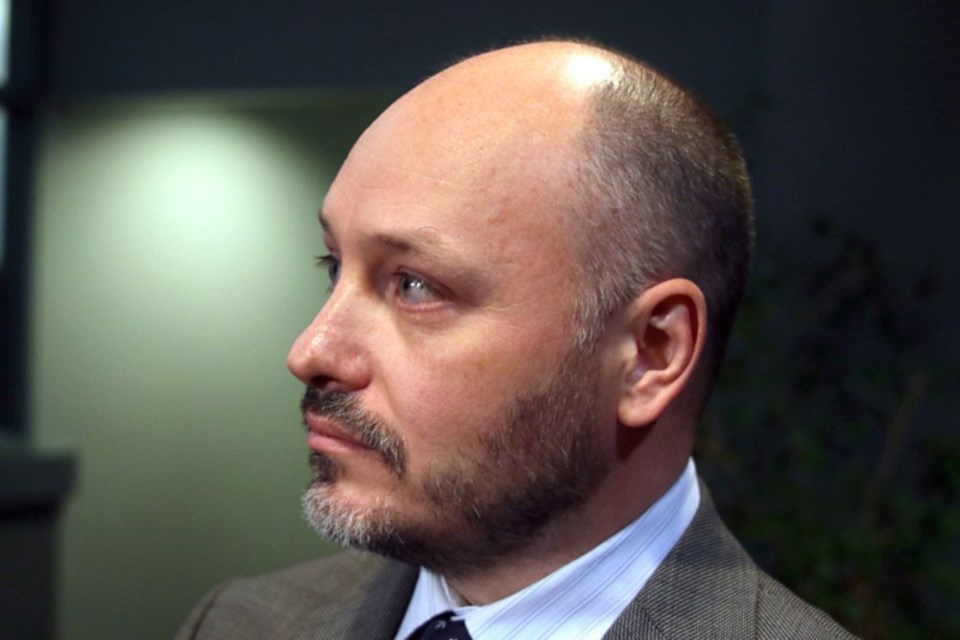THUNDER BAY – The local health unit is appealing to Thunder Bay's city council to rein in a form of rural development it says could threaten local waterways, and even the city’s drinking water supply.
The Thunder Bay District Health Unit has warned the city it could stop approving what are known as advanced septic systems for new subdivisions in the Neebing area over its environmental concerns, potentially blocking development of hundreds of proposed lots.
Using the advanced septic systems, which can be up to 70 per cent smaller than traditional septic fields, has allowed developers to propose smaller lots sizes and greater density in the area than would normally be permitted.
That's good for developers' bottom line, but bad for the environment and homeowners themselves, said Lee Sieswerda, the health unit’s manager of environmental health programs, in a presentation to council in November.
The issue is at play in two “rural settlement zones” in the Neebing area identified in Thunder Bay’s official plan. They’re the only two areas left in the city where developers can propose partially serviced subdivisions, meaning homes receive city water, but aren't connected to sewer services.
“The problem is that there are still these two areas, which for reasons I don’t know are still zoned to have subdivisions with partial servicing – and they also happen to be on some of the most ecologically sensitive areas, right around Mosquito Creek and Pennock Creek," Sieswerda said.
He praised the city for reining in partially serviced developments elsewhere in changes to its official plan in 2000 and 2019, but urged councillors to go further and ban it altogether.
“This is the worst type of development, and that’s why it’s severely restricted” in provincial policy guidelines, he said. “The soil’s like a sponge, and if you pour an unlimited amount of water onto it, it will absorb a certain amount, and then after that the water will just run off.”
“When you combine this with a heavy rainfall or quick snow melt, you’ve created the conditions for a damaging flood… The more partially serviced homes you pack into a given amount of land, the worse this potential flooding problem becomes.”
When excess nutrients like phosphorous and nitrogren flow into waterways from septic systems, they can create problems like toxic blue-green algae blooms and low oxygen areas, Sieswerda said.
Allowing the practice puts the city out of step with its peers, he added.
“I canvassed all of my colleagues across Northern Ontario, and none of them are aware of anybody proposing partially serviced subdivisions anywhere else, except for the city of Thunder Bay,” he said.
Close to 400 proposed lots with advanced septic systems are at some stage of consideration by the city, in addition to a smaller number already built, Sieswerda told council.
The systems allow developers to keep lot sizes small while meeting nutrient discharge limits set by the Ministry of Environment, but come with stringent maintenance requirements.
“Advanced systems, unlike conventional systems, legally require annual inspections, sampling, testing, and periodic replacement of [parts] by a certified professional via a maintenance agreement, forever,” Sieswerda said. “Most homeowners are unaware of this perpetual legal requirement, and we’ve received information that dozens of homeowners have already allowed their agreements to lapse.”
As the code agency for septic systems, he said the health unit won’t be able to keep up with enforcing those requirements for hundreds more homes.
“As such, we’re not in a position to approve any further advanced systems on partially serviced subdivisions at this time,” he said, but left the door open to some compromise.
“Given that there’s a certain amount of investment that has already occurred by some developers, I don’t want to put us in a position of saying absolutely no more."
Short of banning partial service development, he suggested the city could require developers to stick to larger lot sizes associated with traditional septic systems, reducing the risk of saturating the soil.
At the Nov. 15 council meeting, senior planner Decio Lopes noted the city's official plan had been approved by the province.
“What we have here is essentially a costing and staffing issue with the health unit,” he said. “This is a situation where things can be engineered to work. However, there's always pros and cons, and one of the cons is the reliance on a device that has to be maintained in perpetuity to [ensure] no negative impacts off-site.”
Council voted to refer the issue to city administration for further study, in consultation with the health unit and the Lakehead Region Conservation Authority, with a report due back by Feb. 14.
The concerns deserve to be taken seriously, said Coun. Andrew Foulds, particularly those around blue-green algae blooms, which can be toxic to humans and animals.
The health unit recorded practically none prior to 2019, when it reported four, followed by four in 2020, and eight in 2021. The increase is thought to be enabled by a warming climate, but is exacerbated by nutrient runoff from human activity.
Most have been on inland lakes, but one was spotted on Lake Superior in 2019 within about 30 kilometres of the Bare Point water treatment plant, the source of the city's drinking water, Sieswerda noted.
“I can tell you the people on the lakes this affects… are most upset this has started to happen,” he said. “We certainly don’t want to make this problem worse. It’s bad enough on a small inland lake.”
“If we were to have a significant blue-green algae bloom at the Bare Point water treatment plant, it'd be a very big deal, and I don’t think we’ve got any workable plans at the moment to deal with one if we had it. The kind of micro-filtration that we use would be instantly clogged up.”
